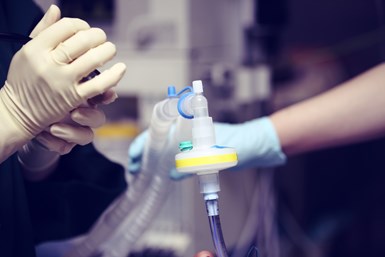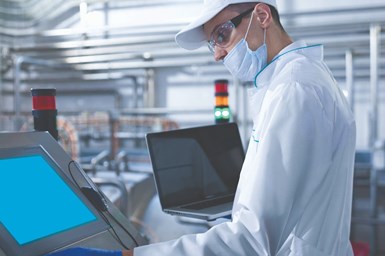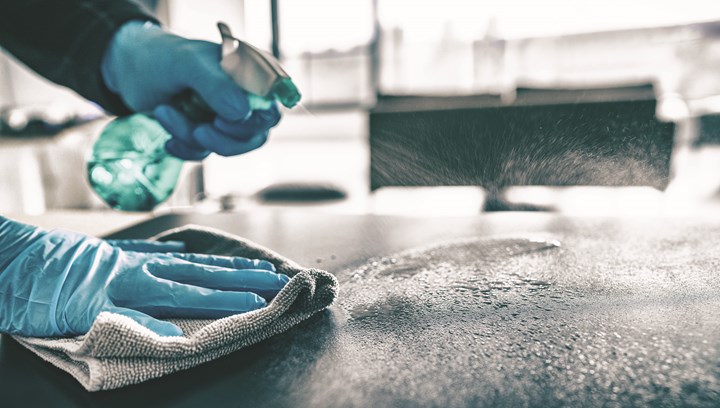Since the coronavirus outbreak began in the U.S., manufacturers have turned to their cleaning OEMs, cleaning agent suppliers or other cleaning industry educators to find answers to their many questions. Like all employers, manufacturers want to know how to keep their building contaminant-free and their workforce safe from the virus, while also fulfilling customer expectations and reaching their company goals. But manufacturers that clean parts in-house have an escalated concern that not only are their manufactured parts cleaned to customer specifications on time but are also free from COVID-19 contamination.
Other concerns are an offshoot from some companies’ production modifications that have changed part volume or the kind of part they need to clean. Therefore, manufacturers need to know how to adapt their cleaning machines to meet these immediate needs.
Here are questions they might be asking:
- Is my cleaning equipment suitable for products I’m not currently manufacturing?
- What if my cleaning equipment must be shut down?
- Might part decontamination after cleaning be necessary?
- Can cleaning of work surfaces interfere with part cleanliness?
- How important is a team approach to workplace cleanliness?
- What’s the value of automation?
Making Adjustments
For some manufacturers, the beginning of the pandemic was the beginning of a complete overhaul of the goods being produced in their facilities. One automotive manufacturer went from making vehicles to creating ventilator parts, without any experience doing so. Therefore, they relied on their cleaning industry contacts for help and advice.

Several manufacturers switched their production focus to medical during the COVID-19 crisis, specifically producing ventilator parts. (Photo courtesy of Getty Images.)
“I was contacted by an automotive OEM to discuss how the Jomesa system can evaluate against medical device cleanliness specifications,” explains Peter Feamster, product management director for Jomesa North America Inc., developer of microscopic filter analysis systems. “The OEM was determining what of its existing equipment was qualified to manufacture/test medical equipment, specifically ventilator components.”
Ecoclean Inc., supplier of industrial parts cleaning equipment, was asked similar questions by its customers. “We were asked what they can do to adapt their machines to meet the needs of these new parts,” says Sandro Siminovich, director of sales for Ecoclean Inc. “For us, it was all about doing trials to find the proper cleaning processes. Most of the parts were related to ventilator manufacturing.”
While companies like these could still function in some capacity amid the COVID-19 crisis, many companies have needed to shut down their operations. In these cases, organizations lean on their cleaning OEMs to educate them about how to temporarily shut off the machines properly, as well as how to restart their systems when they reopen.
Some cleaning systems require replacement of fluids after standing idle for a period of time. “If all washing systems are not kept running with filtration, oil separation, evaporators, distillation tanks and so on, the system can grow mold or bacteria and can be damaged if not shut down properly,” Feamster says.
Siminovich says Ecoclean sent notifications to its customers with instructions on how to start their machines back up when the time comes.
Also, the 6-feet social distancing rule has impacted manufacturers. Mike Valenti, product manager for cleaners at Hubbard-Hall, pointed out that manufacturers that have assembly lines where it is normal for workers to stand shoulder to shoulder (or at least closer than 6 feet), such as in high-volume operations, have been forced to change their processes. “If you have heavily manual process lines, it would be a challenge,” he says. “I’m thinking about large facilities with high-speed lines where they rack and de-rack parts.”
In these cases, automation of cleaning processes might be the ideal response. Feamster suggests preparing to automate as many cleaning processes as possible to avoid total facility shutdown. “Automating the process of cleaning system maintenance, part loading/unloading, cleanliness inspection and so on will allow workers to have more flexible and socially distanced work schedules,” he says.
Virus-Free Parts and Work Surfaces
Manufacturers that are still producing parts are concerned about shipping a product that is virus-free. To keep parts contamination free, manufacturers’ work surfaces and environments must be free of contamination as well. Depending on the item being manufactured and the cleaning process used, this goal can be challenging.

Providing masks and gloves and distancing workers from each other on the shop floor are some ways manufacturers can keep their employees and their customers’ products contamination-free. (Photo courtesy of Getty Images.)
“An assembly with a lot of hand-placed elements may have a higher risk (of contamination) than a part coming off a CNC machine and going directly into packaging for shipment,” says Tom Forsythe, executive vice president at Kyzen Corp. “After evaluating the risk of the virus finding its way onto a part or assembly, the next step is addressing a cleaning step to ensure its removal.” Forsythe suggests that shops wipe parts with alcohol as an added cleaning step.
Although many parts are already cleaned in high temperatures and do not need a further cleaning step, some parts must be recleaned if they have been sitting out because of delayed shipment caused by the coronavirus. “Product left in the open air should be analyzed again and potentially recleaned,” Feamster says.
Delayed parts shipments should be covered in a controlled environment to avoid airborne particles resting on the surfaces, according to Feamster. “Parts with rust preventative are especially susceptible to airborne contamination because they have a sticky surface,” Feamster says.
Ed Kanegsberg, critical cleaning consultant at BFK Solutions, explains that with the COVID-19 pandemic, everyone “obsesses” about killing biological contamination. “Decontamination and cleaning protocols must be fine-tuned to fit the specific manufacturing situation,” Kanegsberg says. “The challenge is to assure that decontamination protocols do not interfere with product functionality, systems safety or worker protective equipment.”
Kanegsberg continues, “We helped a client distinguish between cleaning and maintaining masks that protect workers from toxic chemical dust, in contrast with decontaminating other masks that limit the spread of COVID-19. We developed strategies to protect workers from both biological and chemical hazards and still allow quality production.”

It’s important for manufacturers to understand that chemicals used to sanitize their work surfaces can have an affect on the parts they produce and clean in-house. (Photo courtesy of Getty Images.)
Bleach is one example of a chemical that can be hazardous in certain manufacturing environments. It is on the Environmental Protection Agency’s List N: Disinfectants for Use Against SARS-CoV-2 (or COVID-19); however, heavy use of bleach can create corrosion on ferrous metal fixtures and parts, according to Darren Williams, Ph.D., professor of physical chemistry at Sam Houston State University. “Bleach is a full-spectrum biocide and is excellent for killing bacteria as well as viruses,” Williams explains. “However, because the concern is a coronavirus, it might be appropriate to use less corrosive surfactant disinfectants when adding midday cleaning operations to corrosion-sensitive areas.”
Williams explains that the coronavirus shell is constructed of oil and protein. The oily layer stabilizes the protein shell of the virus. When the oil layer is disrupted, the virus dies, he says. “Therefore, any surface cleaner that contains a surfactant that can dissolve that oily coating is able to kill the coronavirus,” Williams adds. For EPA’s List N, visit gbm.media/epalistn.
Positive Changes
Companies and their staffs are working together toward a common goal and, to do so, unique collaboration and partnerships are often necessary. For instance, Williams believes that custodial managers and production managers within a facility would benefit from using a team approach to workplace and production floor cleanliness and disinfection. “Corrosion and residue issues need to be on the custodial radar,” he explains. “And workplace sanitation needs to be on the production radar.” If this does not happen, he says the alternative is uncertainty, wasteful multigroup purchasing of cleaning supplies and a confusion of group roles in workplace safety and product quality.
Feamster advocates for facilities that clean parts to use this time wisely to speed up innovative and creative solutions to old problems. “Companies that may have reduced production volumes can use this time to improve their processes and address contamination control,” he explains. “Then, when volumes ramp back up, they will be prepared to improve their cleanliness quality on a larger scale.”
Ecoclean Inc. | 248-450-2000 | ecoclean-group.us
Hubbard-Hall | 866-441-5831 | hubbardhall.com
Jomesa North America Inc.| 248-457-0023 | jomesa.com
Kyzen Corp. |615-831-0888 | kyzen.com
Related Content
Multisolvent 100 Vacuum Vapor Degreaser Provides Contactless Cleaning
PMTS 2023: With applications in the most demanding industrial sectors, the machine is especially useful for cleaning parts in the turning, precision mechanics, medical and aerospace industries.
Read MoreSita’s CleanoSpector Measures Part Cleanliness
PMTS 2023: Handheld measuring device checks for cleanliness of parts to assure product quality as well as prior to follow-up processes.
Read MoreEnvironmentally Friendly Model 550 Versatile Parts Washer
PMTS 2023: This washer is useful in a variety of applications, including tool rooms, maintenance operations, low production and precision cleaning.
Read MoreA ‘Clean’ Agenda Offers Unique Presentations in Chicago
The 2024 Parts Cleaning Conference, co-located with the International Manufacturing Technology Show, includes presentations by several speakers who are new to the conference and topics that have not been covered in past editions of this event.
Read MoreRead Next
Our Precision Machining Industry Responds
This moment-in-time article describes the challenges multiple precision machine shops faced — and met — to support customers’ and employees’ needs during the COVID-19 pandemic.
Read MoreEmerging Leaders Nominations Now Open
Here’s your chance to highlight a young person in your manufacturing business who is on the path to be a future leader moving your company forward.
Read MoreA Tooling Workshop Worth a Visit
Marubeni Citizen-Cincom’s tooling and accessory workshop offers a chance to learn more about ancillary devices that can boost machining efficiency and capability.
Read More























